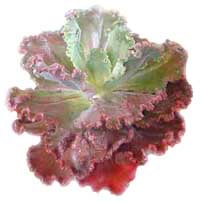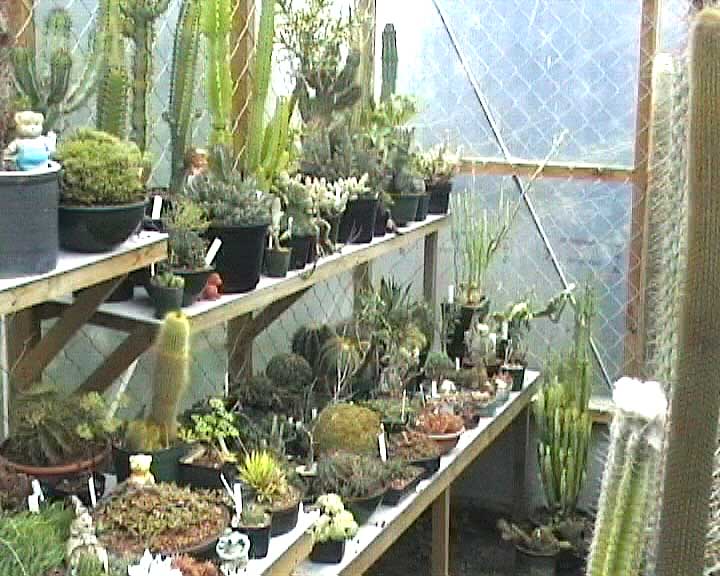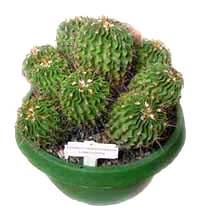|
|
Light And HeatBright light is essential. Without it plants will stretch and become pale and un-natural looking. They will burn if put into full sun after being grown in low light conditions, so introduce plants to the sun gradually. The warmth of an outside nook, or wall, or a greenhouse is best. Plants will usually stand winter cold if kept dry, but frost is deadly to almost all. Auckland rarely suffers from frost, but take precautions just in case! Make sure you know your plants requirements! |
 |
Water
The growing medium should be nearly dry before watering. They will take plenty in summer when plants are growing, reduce watering in autumn and in winter and water only enough to prevent the medium from becoming bone dry. The medium should never remain saturated for more than a day or two. A few types are winter growers and the rest in summer.
Growing Medium
Must be free draining. Should be 60% 3 to 7 mm pumice and 40% composted bark. Suitable potting mixes are available from some garden centres and from the Branch. Standard potting mix with additional coarse pumice sand is suitable.

A typical greenhouse full of healthy plants. Most growers prefer
to keep plants in greenhouses since they provide the perfect,
controlled atmosphere for the growth of species that like heat.
Fertilizer
Do not use standard container plant or garden fertilizer. Special formulas are available at the Auckland Branch meetings. Slow release fertilizers for container plants, preferably with low nitrogen value, and used at lower rates are suitable.
Repotting
Plants should be repotted at least every two years, autumn and winter are the best times. Carefully tip out the plant and remove most or all of the old potting mix. Check for mealy bugs & other pests (refer to the Pest/Disease Analysis section). Trim the roots if nescessary and pot into fresh potting mix. If the plant body is well within the sides of the original pot, use it again. If the plant body is beginning to grow over the sides choose a slightly larger pot. Most succulent plants are slow growing, do not pot into a container which has a small amount of roots to a large quantity of mix. Keep mix slightly moist only for a few weeks to allow damaged roots to heal.
Pest/Disease Analysis
More succulent plants are killed by over watering than any other cause; the following are common pests and diseases which you may encounter :
Mealy Bugs - are probably the most common pest which infests flowers, leaves, stems and roots. Looking like a small white slater, mealy bugs can cause serious damage if not controlled. Spray on appearance with "Target," "Orthene" or a similar insecticide (available through most garden centres. If you are unsure, ask!). Saturate the growing medium with one of the above to control root mealy bug.
Red Spider Mite - thrives in hot dry conditions and the surface of infected plants become corky/webby. They are small and difficult to see with the naked eye. Control by spraying on appearance with a miticide such as dicofol ("Kelthane").
Scale - sometimes infests plants. Control by spraying on appearance with a combination of all purpose spraying oil and an insecticide such as "Target" or "Orthene."
Outside PlantsIf your garden is not very free draining raise the site by adding extra soil and incorporate pumice sand. A site which receives sunlight for most of the day but which is not exposed to the full summer mid day sun will suit a variety of succulents. A site which is hot and dry and sunny all day can be very colourful when planted with the right succulents; choose different varieties for this situation. This site must be away from other garden plants which will usually overgrow their less vigorous neighbours. Control slugs and snails in the winter. |

Echinofossulocactus lamallosus taken at the Auckland CSSNZ2000 Show. |
